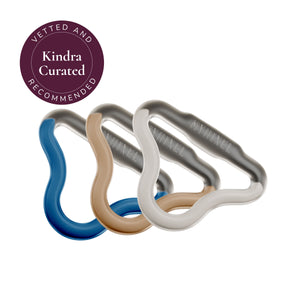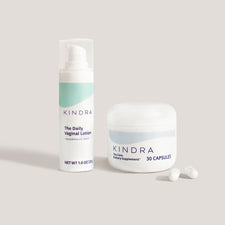As your hormones fluctuate, so do your energy levels. It’s a roller coaster that leaves many menopausal women grappling with fatigue and wondering if—and when—they’ll ever bounce back.
There are plenty of lifestyle changes that can help you reclaim your energy ASAP, from getting a good night’s sleep to adopting a regular exercise regimen. But perhaps the most important thing to consider is how you’re fueling your body. Just about anything with calories can provide you with energy, but some foods do the job better than others. With a few small tweaks, you can avoid the spikes (and crashes) associated with high-sugar dishes and sail through the day feeling alert, focused, and invigorated. Here, we’ve rounded up five ideas to consider as you fill your plate during menopause.
Incorporate Complex Carbohydrates
Put simply, carbohydrates are energy sources. But carbs aren’t all equal when it comes to powering your day. Simple carbohydrates, which can be found in refined sugars, deliver an immediate boost—but can lead to a sudden, stressful crash soon afterward. On the other hand, complex carbohydrates—found in vegetables, fruits, beans, legumes, and whole grains—digest more slowly, allowing for a slow and steady release of energy.
For a versatile complex carbohydrate to add to your meal, turn to brown rice, which offers a whole host of nutritional benefits. Make a big batch in your InstantPot or on the stovetop and use it in meals all week, or cook it up with eggs, kale, turmeric, and lime juice for a tasty main dish. Sweet potatoes are another excellent option for those seeking to up their complex carb intake:: Loaded with fiber and Vitamin A, these richly colored spuds pack quite a nutritional punch, and their subtle sweetness can add complexity to savory recipes. Try making baked sweet potato “fries” for a simple salty-sweet side. Or bake them and stuff them with easy BBQ chicken.
Load Up on Protein
Your body digests protein slower than many other foods, so integrating high-protein items into your meals and snacks can offer steady, long-lasting fuel—and keep you feeling satiated. Try whipping up a quick salmon salad and eating it on crackers or celery sticks, or fire up the grill for marinated chicken breasts in whatever flavor you choose. Plant-based protein, like that found in legumes, can be excellent as a main dish, too. Put together a homemade black bean burger for a heart-healthy twist on a cookout classic. Or roast a batch of soy-lime tofu, saving the leftovers to top salads and rice bowls for bring-to-work lunches all week.
Add a Daily Supplement
It can be tough to get all of the nutrients you need through food alone, especially as you endure hormonal shifts during perimenopause, menopause, and post-menopause. Don’t hesitate to call in reinforcements—especially if you’re feeling fatigued and run down. Kindra’s Focus supplement, for example, taps into the antioxidant power of Pycnogenol, or French maritime pine bark, to manage hot flashes and night sweats (a must for women trying to get better sleep). It also incorporates green tea extract to put a little extra pep in your step. When taken daily, this game-changing capsule increases your body’s production of ATP, a crucial molecule for energy production that helps improve focus and cognitive function, too.
Pump Up Your Fiber Intake
Fiber itself doesn’t actually provide you energy, but it does impact the way your body digests food and absorbs glucose, and a diet high in fiber will help you feel satiated for longer after each meal. You can find fiber in plenty of popular and easy-to-cook foods. Chickpeas, for example, can be an excellent source of fiber, whether you’re eating them in a classic hummus dip or “frizzled” on the stovetop with olive oil, feta, and oregano. Leafy greens are high in fiber, too. Simmer a batch of smoky collard greens for a nutrient-rich side that goes with just about anything, or toss chopped kale with your other favorite veggies for a colorful salad. Looking to add a little more fiber into your day add a couple of spoons of ground flax or chia seeds to your morning cereal, yogurt or smoothie, slice some avocado onto a salad, and/or enjoy a handful or two of berries for dessert. Capitalizing on these small ways to incorporate more fiber into your diet will not only help you stay alert, focused, and full, but it will keep your digestive system on track, too.
Take Well-Balanced Snacks On the Go
Eating too little—or waiting too long between meals—is one of the most common pitfalls that cause women to lose steam. On busy days, be sure to plan ahead and keep snacks handy. Aim for a balance of healthy fats, protein, and fiber to help you stay full for the long haul.
An apple with sugar-free peanut butter, for example, might be the perfect sweet-and-salty antidote to your afternoon slump. Veggies and hummus, on the other hand, might be the nutrient-dense mid-morning bite you’ve been seeking. Or perhaps a ready-made snack bar could be the trick to getting you through a busy day. Bossa Bars, a go-to treat for many menopausal women, offer a balanced combination of protein, fiber, healthy fat, and carbohydrates all in a decadent chocolate package. The kicker? They’re just 150 calories per bar, offering maximum nutritional benefits without weighing you down in the process.

















